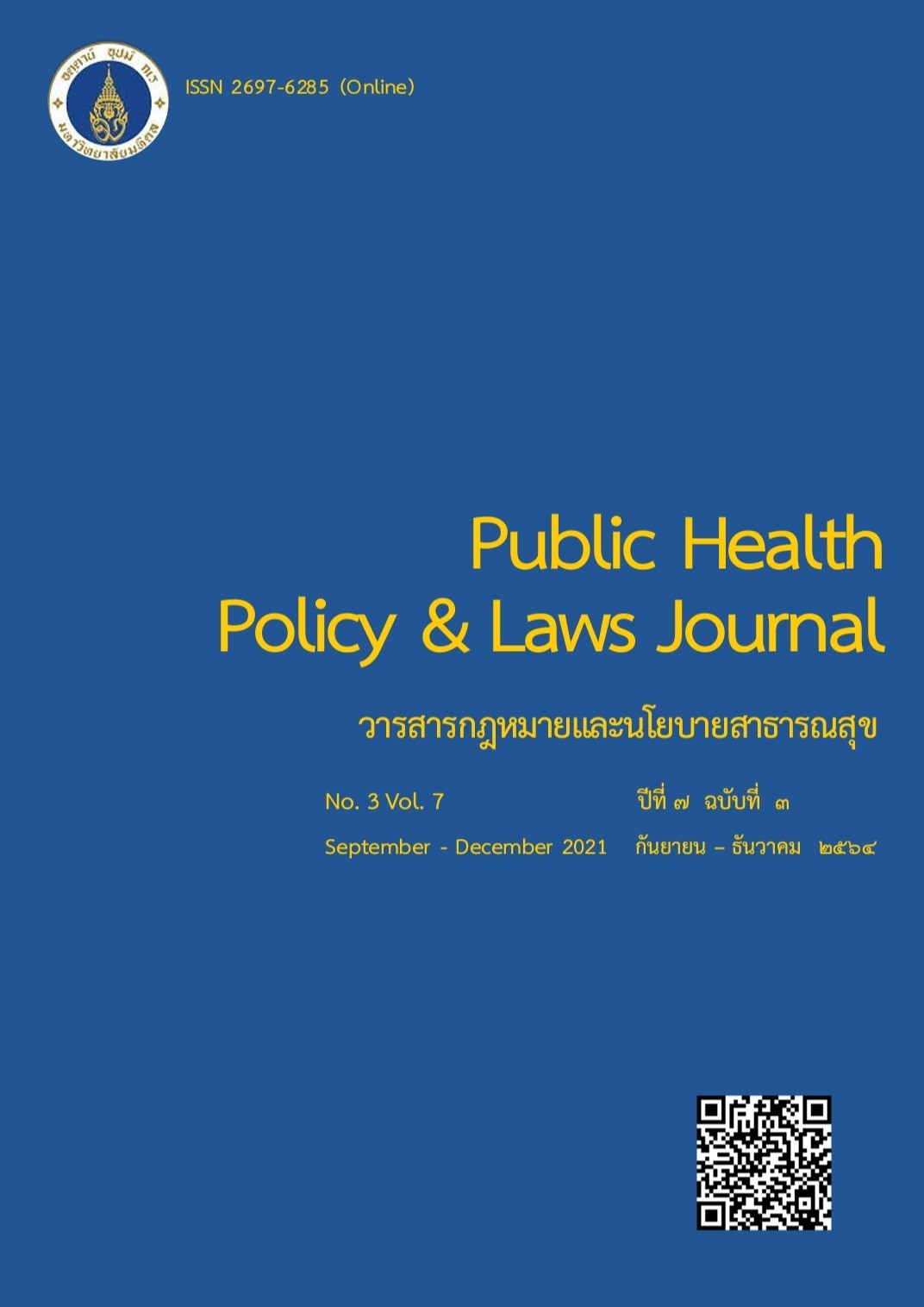Lotion Product Selection Buying Behaviour of Students at a university in northern Thailand
Keywords:
lotion product, attitude, behavior, marketing mixAbstract
This descriptive research aimed to study lotion product buying behavior. Samples were 375 second year students, with a questionnaire as research instrument, and data analyzed for descriptive and inferential statistics, percentage, mean, standard deviation, and Chi-square test.
Research findings are as follows: more than half was female (68.8%), with average age of 20 years old (63.5%), majoring in information technology science and communication field (35.5%), receiving monthly income of 5,001-10,000 baht (40.0%), using Nivea product (34.7%), and the benefit was UV/SPF50 +++ protection (59.5%), most had never been allergic to lotion products (92.3%), and their hometown were in the northern region (45.1%). Students chose to buy their selection through marketing mix at a moderate level (52.5%), having knowledge in the use of lotion product at a high level (79.2%), and having attitude toward using lotion product at a moderate level (44.3%). Findings indicated that sex, major, money received from parents, lotion products most commonly used, benefits from lotion product, hometown, marketing mix, knowledge, and attitude, were correlated with lotion product selection behavior, with statistical significance at p-value ≤ 0.05. Age and whether allergic to lotion product experience were not correlated with lotion product selection behavior.
Most customers want to use lotion products to take care of their skin, so they seek for products, and several methods, for their skin to look healthy always. Therefore, customers should select suitable lotion products for their own skin.
References
จุฑารัตน์ ทองสนิท. (2562). ปัจจัยที่มีอิทธิพลต่อการตัดสินใจเลือกซื้อผลิตภัณฑ์ดูแลผิวหน้าออร์แกนิคของผู้บริโภคที่อาศัยอยู่ในเขตกรุงเทพมหานคร.วารสารมนุษย์ศาสตร์และสังคมศาสตร์ มหาวิทยาลัยเอเชียอาคเนย์. 3(2): 9-11.
ฐานิสร ไกรกังวาร และธรรมวิมล สุขเสริม. (2562). การตัดสินใจซื้อครีมกันแดดทาผิวกายของลูกค้าในจังหวัดอุบลราชธานี.วารสารวิชาการมหาวิทยาลัยอีสเทิร์นเอเชีย, 9(3):202-212.
ทรงฤทธิ์ ทองมีขวัญ, บุษยา สังขชาติ, ทิพย์สุคนธ์ กิจรุ่งโรจน์ และคณะ. (2562). ความสัมพันธ์และอำนาจในการทำนายของการรับรู้ความเสี่ยงอันตรายที่มีผลต่อพฤติกรรมการป้องกันกลุ่มอาการคอมพิวเตอร์ซินโดรมของบุคลากรสายสนับสนุน. วารสารเครือข่ายวิทยาลัยพยาบาลและการสาธารณสุขภาคใต้. 5(2): 258-271.
นภาทิพย์ ไตรกุลนิภัทร.(2559). ปัจจัยที่มีผลต่อการตัดสินใจเลือกซื้อผลิตภัณฑ์กันแดดในเขตกรุงเทพมหานครปริมณฑล.วิทยานิพนธ์การศึกษาตามหลักสูตรบริหารธุรกิจมหาบัณฑิต คณะพาณิชยศาสตร์และการบัญชี มหาวิทยาลัยธรรมศาสตร์.
ปพนสรรค์ กลั่นเรืองแสง มลินี สมภพเจริญ และณัฐนารี เอมยงค์. (2561). การเลือกใช้ผลิตภัณฑ์เพื่อเพิ่มความใสของผิวพรรณในกลุ่มนักศึกษาระดับปริญญาตรีของมหาวิทยาลัยแห่งหนึ่งในกรุงเทพมหานคร. วารสารวิจัย มข. (ฉบับบัณฑิตศึกษา). 18(1):13-23.
ประภาเพ็ญ สุวรรณ และสวิง สุวรรณ. (2534). พฤติกรรมศาสตร์พฤติกรรมสุขภาพและสุขศึกษา.
กรุงเทพฯ: เจ้าพระยาการพิมพ์.
รัตนาพร ฉัตรมงคล. (2561). กฎหมายคุ้มครองการซื้อเครื่องสําอางผ่านสื่อออนไลน์. วารสารกฎหมายสุขภาพและสาธารณสุข. 4 (1): 88-97.
วีรพล วัฒนกุลจรัส. (2558). สวยเกาหลี สวยให้สุด.เข้าถึงได้จาก http://www.chicministry.com
วารุณี จิรารัตนกุลชัย. (2554). ค่านิยมการมีผิวขาว ความพึงพอใจในสีผิว ทัศนคติ และพฤติกรรมการบริโภคผลิตภัณฑ์เสริมอาหารประเภทบำรุงผิวของผู้หญิงในกรุงเทพมหานคร. งานนิพนธ์นิเทศศาสตรมหาบัณฑิต, สาขาวิชาสื่อสารการตลาด, คณะมนุษยศาสตร์และสังคมศาสตร์,มหาวิทยาลัยบูรพา.
เอกพล ลิ้มพงษา, นภภัค ใจภักดี และศิริรัตน์ ดีศีลธรรม (2558). การตั้งตำหรับและประเมินผลิตภัณฑ์พอกหน้าที่เตรียมจากข้าวหอมมะลิไทย.วารสารวิจัยมหาวิทยาลัยขอนแก่น. 19 (6):905-915.
Best, J. W. (1977). Research in Education. (3rd ed). New Jersey: Prentice hall Inc.
Krejcie,R.V.& Morgan,D.W.(1970).Determining sample size for research activities. Educational and Psychological Measurement.30(3):607- 610.
Downloads
Published
How to Cite
Issue
Section
License
Disclaimer and Copyright Notice
The content and information presented in articles published in the Journal of Law and Public Health Policy represent the opinions and sole responsibility of the respective authors. The editorial board does not necessarily agree with or assume any responsibility for the views expressed.
All articles, data, content, images, and other materials published in the Journal of Law and Public Health Policy are the intellectual property of the journal. Any individual or organization wishing to reproduce, distribute, or otherwise use the entirety or any part of such materials must provide proper citation.





